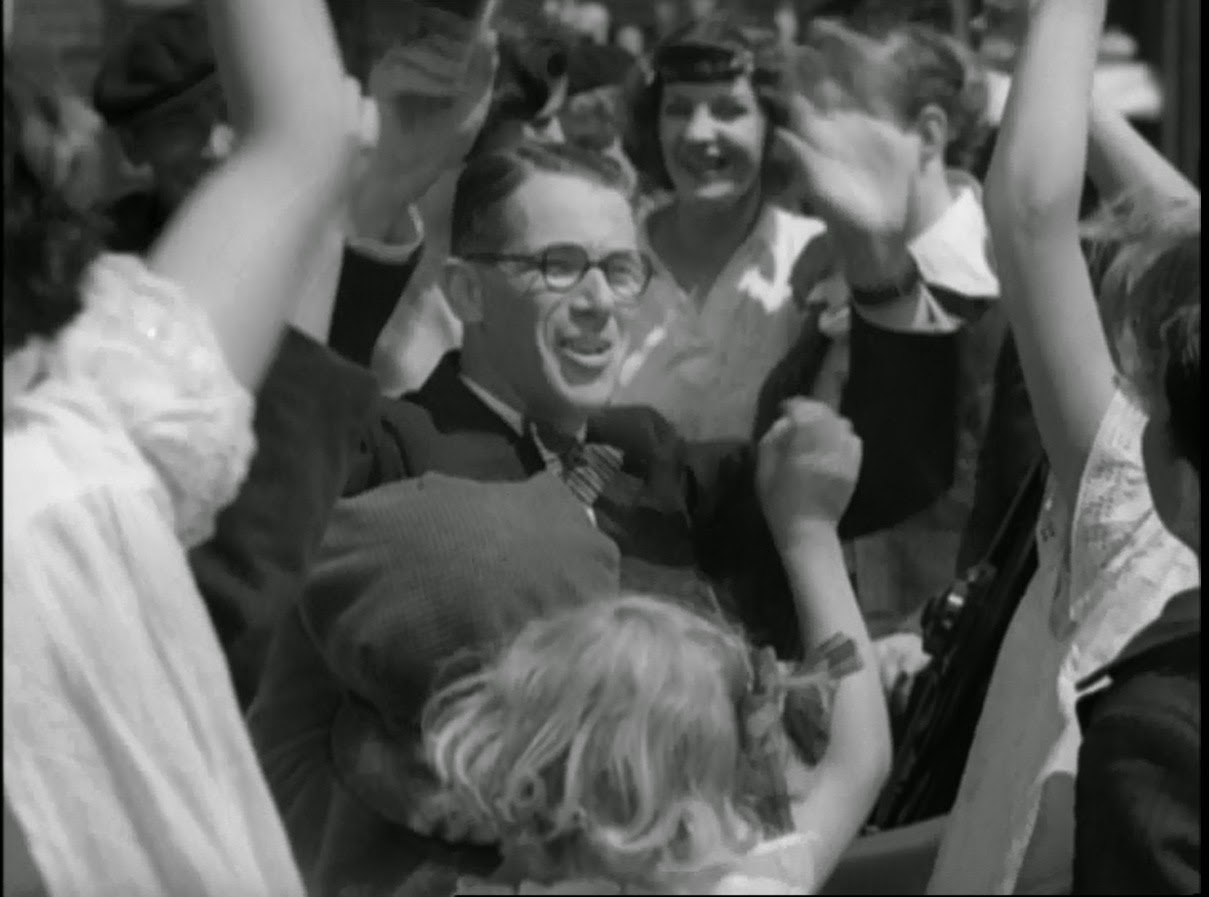Music Hath Charms (1935)
Warning: This film encourages reckless behaviour!
If I was a Daily Mail journalist, I would be pulling my hair out in fury: Cycling whilst wearing headphones! What a disgrace! You'll be killed and it will be your own fault!
Yes, cycling whilst wearing headphones is dangerous, but back in 1935 the Daily Mail probably had other things to write about (how Oswald Mosley could save Britain and the evils of Communism - but this isn't the place to be discussing that!).
The point is, she wearing headphones because she just can't get enough of the superstars that are Henry Hall and the BBC Dance Orchestra!
 |
| Henry Hall and Hildegard |
It seems strange looking back nearly 80 years, but BBC radio had a power and influence over society that is hard to imagine in this age of immediate access to entertainment from anywhere in the world. However in 1935, the BBC was offering something people couldn't get elsewhere: popular music broadcast straight into their homes. As such, Henry Hall and his band became stars:
 |
| Henry Hall |
And in the best tradition of the entertainment industry, when someone becomes a star their status needs to be exploited.
In this case, it was decided to take Hall and his band, put them into a film playing some of their most famous numbers and show them off to the world - using an incredibly thin plot to hold the story together. I use the words story and plot in a very loose way. Think Mama Mia or Spiceworld, ridiculous stories that show off the songs of stars. That's what we have here:
The 'story' revolves around the ability of Henry Hall's broadcasts to:
Stop African tribes attacking white settlers ...
... to bring lovers together ...
 |
| Billy Milton |
 |
| Lorna Hubbard |
... help stranded mountaineers reach safety ...
 |
| Antoinette Cellier & Wallace Douglas |
... make judges smile ...
 |
| Aubrey Mallalieu |
... and make a policeman do some of the most camp dancing I have ever seen on screen:
As an aside, take a look at the picture above. There's something not very 'London' about the buildings. Also the shop in the background has the name 'Antonio' above it. And in this shot ...
... we see 'Sportas Galleries'. This makes me think this scene was filmed on a set that had been built for another film. However, if the shop front above was genuine it must have been one of the most impressive shops in London.
Talking of 1930s style, here's Henry Hall shaving. The mirror is fantastic:
Here's who else to look out for:
 |
| W.H. Berry & Gus MacNaughton |
 |
| Carol Goodner |
 |
| Edith Sharpe |
 |
| American singing star Hildegard Loretta Sell |
 |
| Arthur Margetson |
 |
| Syd Crossley |
Music Hath Charms may not have a complex plot, may not be the world's most exciting and dramatic musical and may not have the best songs you'll ever hear, but it is fun. Simple, light hearted fun. And that's something we all need.
It's currently available on 'British Musicals of the 1930s - Volume 1'























